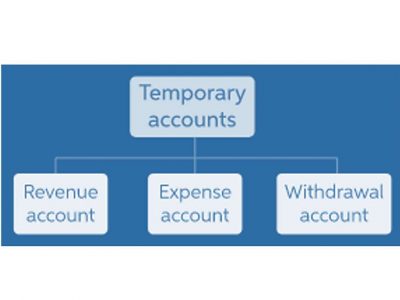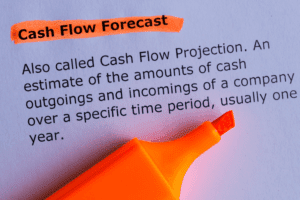Accounting principles help hold a company’s financial reporting to clear and regulated standards. In the United States, these standards are known as the Generally Accepted Accounting Principles (GAAP or U.S. GAAP). Companies required to meet GAAP standards must do so in all financial reporting or risk facing significant consequences. When you have several different people recording data, compiling reports, and performing other financial documentation, the Consistency Principle is seldom followed. You need a set method in place internally or to rely on an accounting firm who follows consistent policies and procedures in order to ensure GAAP is followed.
- As you can see, the consistency principle is intended to keep financial statements similar and comparable.
- Consistency in accounting methods and principles is critical for the users of financial statements because it enables them to make meaningful comparisons between financial statements from different periods.
- – Ed’s Lakeshore Real Estate buys software licenses for its property listing programs every year.
- The sole purpose of the consistency principle, or consistency concept, is to ensure that transactions or events are recorded in the same way, from one accounting year to the next.
The conservatism principle says if there is doubt between two alternatives, the accountant should opt for the one that reports a lesser asset amount or a greater liability amount, and a lesser amount of net income. Thus, when given a choice between several outcomes where the probabilities of occurrence are equally likely, you should recognize that transaction resulting in the lower amount of profit, or at least the deferral of a profit. Similarly, if a choice of outcomes with similar probabilities of occurrence will impact the value of an asset, recognize the transaction resulting in a lower recorded asset valuation. By using an objective viewpoint when constructing financial statements, the result should be financial information that investors can rely upon when evaluating the financial results, cash flows, and financial position of an entity. A company’s accounting results are verifiable when they’re reproducible, so that, given the same data and assumptions, an independent accountant would come up with the same result the company did.
Basic accounting principles
As you can see, the consistency principle is intended to keep financial statements similar and comparable. If companies changed accounting methods for valuing inventory every single year, investors and creditors wouldn’t be able to compare the company’s financial performance or financial position year after year. They would have to recalculate everything to make the financial statements equivalent to each other. Another benefit of the consistency principle is that it promotes accuracy and reliability in financial reporting. When entities use consistent accounting methods and principles, they can more easily identify errors and omissions in financial statements, allowing them to correct any inaccuracies before the financial statements are released to users.
Consistency principle definition
Generally Accepted Accounting Principles make financial reporting standardized and transparent, using commonly accepted terms, practices, and procedures. Formally reported data must be fact-based and dependent on clear, concrete numbers. It’s easy to start wandering into speculation when you talk about finance—especially when thinking about the future of the company—and this principle makes sure to keep accountants firmly grounded in reality. Businesses can still engage in speculation and forecasting, of course, but they cannot add this information to formal financial statements.
– Assume our example above except now Todd has decided to change is method of accounting from using both sales and gift cards payable to only accounting for his gift cards in a payables account. Todd is changing from a non-GAAP appropriate method to an approved method of accounting. A massive multi-national company may consider a $1 million transaction to be immaterial in proportion to its total activity, but $1 million could exceed the revenues of a small local firm, and so would be very material for that smaller company. Companies can change from using LIFO to FIFO or vise versa and still be in agreement with the consistency principle. Companies cannot, however, change to LIFO in one year in order to minimize taxes, change to FIFO the following year to appeal to lenders, and change back to LIFO the year after that to minimize taxes again.
GAAP is a set of detailed accounting guidelines and standards meant to ensure publicly traded U.S. companies are compiling and reporting clear and consistent financial information. Any company following GAAP procedures will produce a financial report comparable to other companies in the same industry. This provides investors, creditors and other interested parties an efficient way to investigate and evaluate a company or organization on a financial level. Under GAAP, even specific details such as tax preparation and asset or liability declarations are reported in a standardized manner. At the same time, there are some challenges to keep in mind when looking at the consistency principle.
When talking about different accounting methods, this can include anything from cash vs accrual accounting, and using LIFO vs FIFO methods. The sole purpose of the consistency principle, or consistency concept, is to ensure that transactions or events are recorded in the same way, from one accounting year to the next. The articles and research support materials available on this site are educational and are not intended to be investment or tax advice.
It is the U.S. equivalent of the International Financial Reporting Standards (IFRS). Though only regulated and publicly traded businesses are legally obligated to follow GAAP, some private companies also choose to meet the same standards in financial statements. When these gift certificates are sold, Todd sometimes credits a sale and sometimes he credits a gift cards payable account.
What is the Consistency Principle?
If your financial statements violate the consistency principle, the auditor may refuse to give an opinion. Auditors are especially concerned that their clients follow the consistency principle, so that the results reported from period to period are comparable. This means that some audit activities will include discussions of consistency issues with the management team. An auditor may refuse to provide an opinion on a client’s financial statements if there are clear and unwarranted violations of the principle. When financial statements are consistent over time, users can more easily identify trends, changes, and anomalies in an entity’s financial position and performance. The purpose of financial statements is to provide information about an entity’s financial position and performance to its users, such as investors, creditors, and regulators.
The monetary unit principle states that you only record business transactions that can be expressed in terms of a currency and assumes that the value of that currency remains relatively stable over time. GAAP prepared financial statement, looking at inventory, for instance, you know you are looking at a dollar figure, not a number of physical units. Consistency refers to using same Accounting Principle or method for recording transactions while conservatism refers to use of lower value in reporting that could lead to overstatement of assets, revenue, and income.
The Financial Accounting Standards Board refers to consistency as one of the characteristics or qualities that makes accounting information useful. The correctness of decision-making highly depends on the accuracy of financial information. We follow ethical journalism practices, which includes presenting unbiased information and citing reliable, attributed resources. Much of our research comes from leading organizations in the climate space, such as Project Drawdown and the International Energy Agency (IEA). Carbon Collective is the first online investment advisor 100% focused on solving climate change.
By promoting consistency in accounting methods and principles, the https://www.wave-accounting.net/ helps to ensure the accuracy, reliability, and usefulness of financial reporting for all users. The consistency principle also prevents the management of a company from overstating its revenue and profit. If there was no consistency principle in place, the management could easily manipulate their financial statements each year using different accounting methodologies to overstate their performance. For instance, it might choose to switch from a double-declining balance method to a straight-line method of depreciation to overstate its profits in the initial years. A business can choose either of these methods, and can even make a one-time change between the two. However, a business can’t report based on LIFO one year to pay less in taxes, then the next year shift to FIFO to show a higher net income and be more attractive to investors, then go back to LIFO the following.
Importance of Consistency
It is essential for a reporting entity to follow the consistency principle, since it allows you to compare reported information from period to period. This makes it easier to spot trends over extended periods of time, which may lead to actionable information that can improve business outcomes. The consistency principle is important in accounting because it ensures that financial statements are comparable from one period to another. While the consistency principle is a fundamental accounting principle that ensures the comparability of financial statements over time, there are several limitations to its effectiveness. The consistency principle is particularly important when it comes to the application of accounting standards. Entities must ensure that they apply accounting standards consistently and in a manner that accurately reflects the economic substance of transactions and events.
Someone on our team will connect you with a financial professional in our network holding the correct designation and expertise. Our writing and editorial staff are a team of experts holding advanced financial designations and have written for most major financial media publications. Our work has been directly cited by organizations including Entrepreneur, Business Insider, Investopedia, Forbes, CNBC, and how to handle invoice deposits or pre many others. This team of experts helps Finance Strategists maintain the highest level of accuracy and professionalism possible. The objective of this principle is to ensure that the performance of different years can be measured and judged on the same basis year after year. Harold Averkamp (CPA, MBA) has worked as a university accounting instructor, accountant, and consultant for more than 25 years.
For financial analysts performing valuation work and financial modeling, it’s important to have a solid understanding of accounting principles. While this is important, financial models focus more on cash flow and economic value, which is not significantly impacted by accounting principles (other than for the calculation of cash taxes). The federal government began working with professional accounting groups to establish standards and practices for consistent and accurate financial reporting. US securities law requires all publicly-traded companies, as well as any company that publicly releases financial statements, to follow the GAAP principles and procedures. This is a cost flow assumption in which the most recent costs of products are the first to come out of inventory so the oldest costs stay in.










